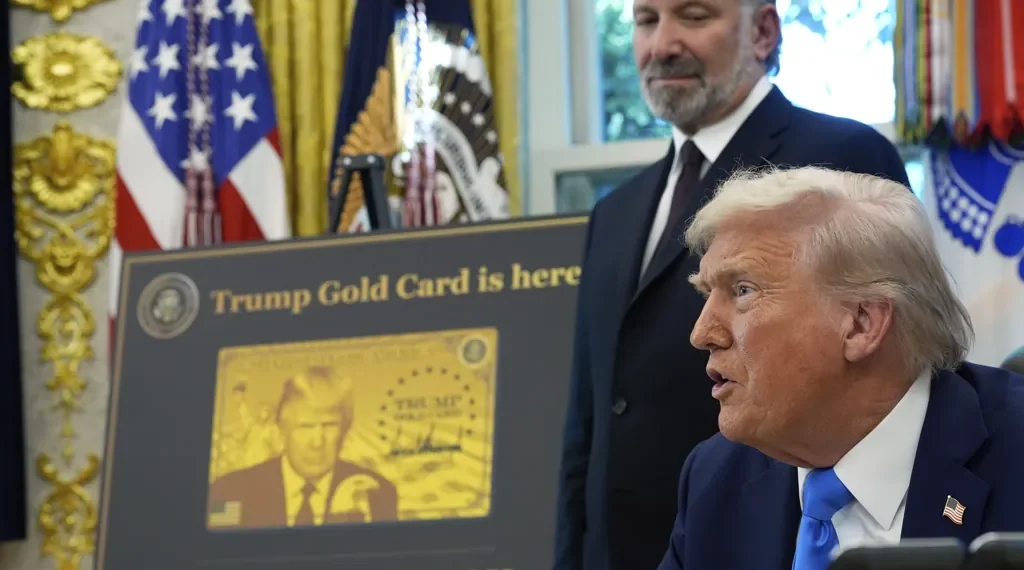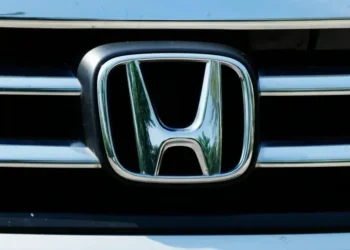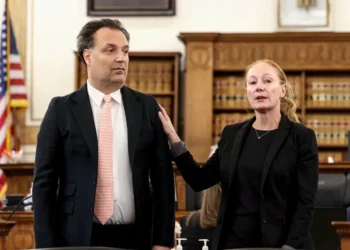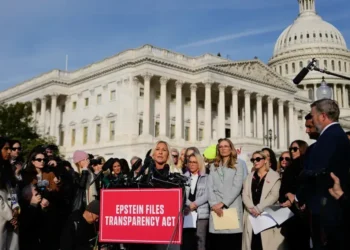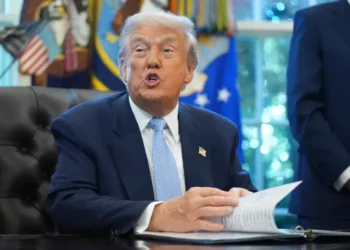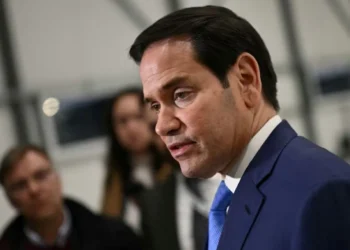Trump signs proclamation imposing $100K annual H-1B visa fee and unveiling $1M “gold card” investor visa, sparking legal and industry debate.
Published Time: 09-20-2025, 19:45 EDT
Former President Donald Trump has signed a new proclamation dramatically altering the U.S. visa system for highly skilled workers and foreign investors. The policy imposes a $100,000 annual fee on H-1B visa applications and introduces a “gold card” visa program requiring a $1 million contribution as a potential pathway to citizenship.
The changes are expected to face immediate legal challenges, as critics argue Trump is exceeding presidential authority by bypassing Congress. If enforced, the measures would significantly raise costs for companies and individuals relying on U.S. visa programs created more than three decades ago.
Key Details of the Proclamation
Commerce Secretary Howard Lutnick confirmed that the annual H-1B visa fee will be set at $100,000. “All big companies are on board,” Lutnick told reporters, though major technology firms have not publicly endorsed the plan.
The H-1B visa, established in 1990, was designed to help U.S. companies hire skilled workers in science, technology, engineering, and math (STEM) fields when qualified American workers were unavailable. Traditionally, salaries for H-1B recipients average far below those of senior-level U.S. employees, fueling concerns that the program suppresses wages.
Trump defended the move, insisting that the technology industry would benefit. “I think they’re going to be very happy,” he said Friday.
Tech Industry Reactions
Representatives for major technology companies, including Amazon, Apple, Google, and Meta, did not immediately respond to requests for comment. Microsoft declined to provide a statement.
Despite Trump’s claim that the industry supports the policy, companies have long relied on the H-1B program to secure top global talent. In 2025, Amazon was the leading recipient of H-1B visas, followed by Tata Consultancy, Microsoft, Apple, and Google, according to U.S. Citizenship and Immigration Services (USCIS).
California continues to employ the highest number of H-1B workers nationwide.
Impact on U.S. Training and Hiring
Lutnick emphasized that the new fee is designed to discourage companies from using the H-1B program for entry-level or trainee positions.
“So no longer will you put trainees on an H-1B visa,” Lutnick said. “If you’re going to train people, you’re going to train Americans. If you have a very sophisticated engineer and you want to bring them in, then you can pay $100,000 a year for your H-1B visa.”
Critics argue the policy could make it economically unfeasible for many companies to hire foreign workers, even in roles requiring advanced expertise.
Introduction of the “Gold Card” Visa
Alongside the H-1B changes, Trump introduced a new investor visa known as the “Trump Gold Card.” This visa requires a $1 million contribution, following vetting and processing fees, and offers a potential pathway to U.S. citizenship.
For corporations, the cost will be $2 million. Trump also unveiled a higher-tier “Trump Platinum Card,” priced at $5 million, which allows holders to spend up to 270 days annually in the U.S. without being subject to U.S. taxes on foreign income.
A previous version of the investor visa program was announced in February 2025, but the platinum card will now replace it. Applicants may join a waitlist, though the plan requires congressional approval.
Historical Context of H-1B Visas
The H-1B program was originally created by Congress in 1990 to fill labor shortages in specialized industries. The program currently caps visas at 85,000 per year, distributed through a lottery system.
Critics, including labor groups, have long argued that companies use the system to import cheaper foreign labor rather than hire qualified U.S. workers. Large consulting firms such as Wipro, Infosys, HCL Technologies, Tata Consultancy, IBM, and Cognizant are frequent sponsors, contracting employees to American companies seeking cost savings.
In recent years, USCIS has tightened oversight to address fraud, including duplicate applications designed to increase lottery odds. In 2024, applications dropped nearly 40% after the agency began enforcing a “one employee, one entry” rule.
Divided Views on Reform
Doug Rand, a former USCIS official under the Biden administration, criticized Trump’s proclamation as politically motivated.
“This isn’t real policy—it’s fan service for immigration restrictionists,” Rand said. “Trump gets his headlines, inflicts a jolt of panic, and doesn’t care whether this survives first contact with the courts.”
The AFL-CIO has previously called for replacing the H-1B lottery with a system that awards visas to employers offering the highest wages. During his first term, Trump supported a similar shift, arguing it would protect U.S. workers.
Legal and Political Outlook
Immigration experts expect the proclamation to face swift legal challenges. Because the visa programs were created by Congress, critics argue that only legislative action—not presidential proclamations—can impose such sweeping changes to fee structures and visa categories.
If courts allow the policy to proceed, the cost of securing foreign talent could rise dramatically, reshaping U.S. hiring practices across technology, engineering, and research sectors. For investors, the gold and platinum card programs may provide new opportunities, though they remain contingent on congressional approval.
Broader Implications for Immigration Policy
The new proclamation reflects Trump’s broader approach to immigration, which has emphasized restricting entry and tightening oversight of visa programs. His administration has previously pursued changes to asylum, refugee admissions, and family reunification policies.
The impact of these latest visa measures—whether implemented or struck down in court—will likely fuel ongoing debate over how the U.S. balances economic needs with immigration reform.
Conclusion
Trump’s decision to impose a $100,000 annual fee on H-1B visas and launch a $1 million “gold card” visa signals a major shift in U.S. immigration and labor policy. While supporters argue the changes will encourage companies to prioritize American workers, critics warn they could disrupt industries dependent on global talent and provoke lengthy legal battles.
The Supreme Court and Congress may ultimately determine whether these measures become lasting components of U.S. immigration policy or temporary flashpoints in a contentious political debate.
This article was rewritten by JournosNews.com based on verified reporting from trusted sources. The content has been independently reviewed, fact-checked, and edited for accuracy, neutrality, tone, and global readability in accordance with Google News and AdSense standards.
All opinions, quotes, or statements from contributors, experts, or sourced organizations do not necessarily reflect the views of JournosNews.com. JournosNews.com maintains full editorial independence from any external funders, sponsors, or organizations.
Stay informed with JournosNews.com — your trusted source for verified global reporting and in-depth analysis. Follow us on Google News, BlueSky, and X for real-time updates.
